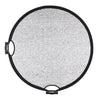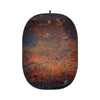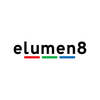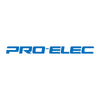The Guide to Vintage Photography

Vintage Photography has timeless appeal with the right equipment. - Photo by Suzy Hazelwood
Photography has been in existence for nearly 200 years and has undergone many changes in terms of equipment and shooting styles. Even with the crisp images, modern photography can offer us, the visual appeal of vintage photography remains timeless even if they do not offer perfection, and photographers like to take a page from previous iterations of photography to produce unique images that provide a historical feel to their images. Vintage photography includes a range of styles from black and white to sepia, which can capture different eras, and we have some tips and equipment that can help you achieve the desired effect for your photographs.
Cameras and Lenses
If you want to incorporate a vintage feel in your photography, you need to start by using the right camera and lens to capture your images. When selecting a camera, you can either choose to go with a retro camera that uses film and requires manual development or select a digital camera and adjust the settings to add a dated feel to your images. Classic cameras can be difficult to find nowadays. You have no guarantee about how the images are going out until they are fully developed, but that adds to the allure of vintage photography as it embraces every imperfection and adds a realistic touch to any image. A modern DSLR be as effective as old cameras, but they might require shutter speed, ISO, and contrast adjustments along with additional edits in post-production to produce the desired effect.
Lighting
Each style and setting for vintage photography require different lighting techniques that range from sharp and harsh to gentle lighting, depending on the essence you wish to capture. Here are some staples you should include in your vintage photography kit
PIXAPRO KINO II 600+
This monolight studio strobe flash is one for the ages as it is intense and provides 20 times the power output of a flashgun. Flash has come a long way from being a bright light used by photographers to illuminate the surroundings as this version comes with adjustable power with a built-in receiver and faster flash durations and recycling time, allowing you to customize any scene. The hard light produced by the flash can be used for black and white images to produce distinct shadows while keeping images simple. Additionally, they can be used for intimate portrait settings or large group shots, and they can pair well with diffusers and modifiers, enabling you to get the perfect shot.
KINOII 600+ Studio Flash Head With Built-In 2.4GHz Receiver (QS600 II)
PIXAPRO LED200B MKIII LED Light
The Hollywood style of vintage portrait is usually done using a film HMI lighting set, as traditional spotlights and fresnel lenses, and barn doors. You do not need the large HMI lighting to do this; this can be done by using the latest technology, COB LED head such as PIXAPRO LED200B MKIII (bicolour) or GODOX VL300 (daylight). They are affordable compared to traditional HMI lighting sets.
 Optical Fresnel Lens with Barndoor
Optical Fresnel Lens with Barndoor
A unique characteristic that makes Hollywood lighting so special is the use of traditional spotlights with Fresnel lenses and barn door, which is the key lighting modifiers for this type of portrait. This Fresnel and barndoor can easily achieve a narrow depth of field and a high-quality monochrome print. This is available in Bowens S fit, which is compatible with both LED200B MKIII, GODOX VL300, and KINO II 600+.
PIXAPRO Optical Fresnel Lens With Barn Doors (S-Type Fitting)
PIXAPRO Magnum Reflector
This reflector is specifically used to modify hard light as it allows photographers to achieve bright and even lighting with a subtle falloff. While modifiers are typically used to soften lighting, the Magnum Reflector is adept at highlighting facial features and enhancing the right details with its unique lighting, which is ideal for vintage photography, including portraits. The parabolic-shaped outdoor reflector focuses on the lighting while allowing the photographer to light any set-up effectively. It also comes with a diffuser sock if you are looking for a softer touch for your photographs, and it is excellent for replicating sunlight in a studio setting for more natural images.

High-Performance Magnum Reflector (Bowens S-Type Fitting)
PIXAPRO 60x90cm Softbox with Grid
This softbox attaches to the flash and ensures the light is spread evenly while providing a natural-looking light that adds a layer of softness to any photograph. It comes with a highly reflective interior that provides maximum utilization of the light provided by the studio flash and a black exterior that reduces light spill. If you're going for a softer look, this softbox diffuses shadows with its two layers of diffusion for different photography styles and effectively capturing subjects regardless of their size. It comes with additional features such as a honeycomb grid that can be easily attached to the softbox and restricts the light beam for more light control and focused images.
60x90cm (23.6"X35.4") Rectangular 5cm Grid Softbox
Background
Vintage photography can be shot with different types of backgrounds that include outdoor scenes and plain or patterned indoor studio backdrops. The right background can make or break your photograph, and if you're choosing to shoot in black and white, you could benefit from using a black backdrop that can provide contrast and help your subject stand out against the background. The black can also help produce detailed and attention-grabbing images that add a flair of elegance and drama by taking your photos back in time and highlighting their classic appeal.
Conclusion
Three points lighting set-up is commonly applied to vintage portrait photography. Different lights are used to separate the foreground and background and to create different tones and contrast through a back, rim, key light, kick light. It can be easily achieved through studio flash or COB LED through different modifiers.
























































































































































































































































































